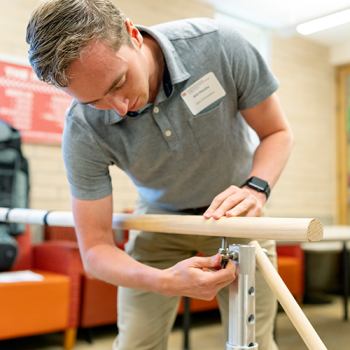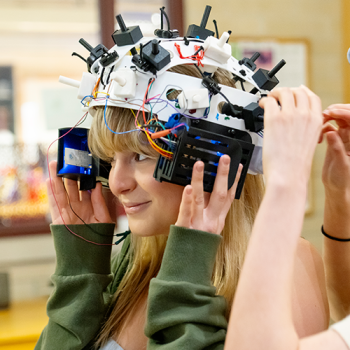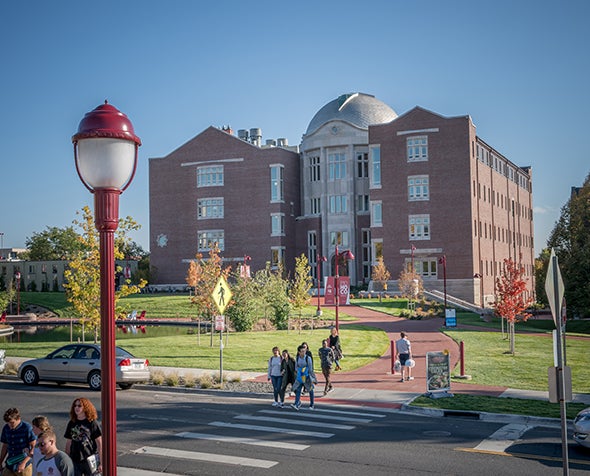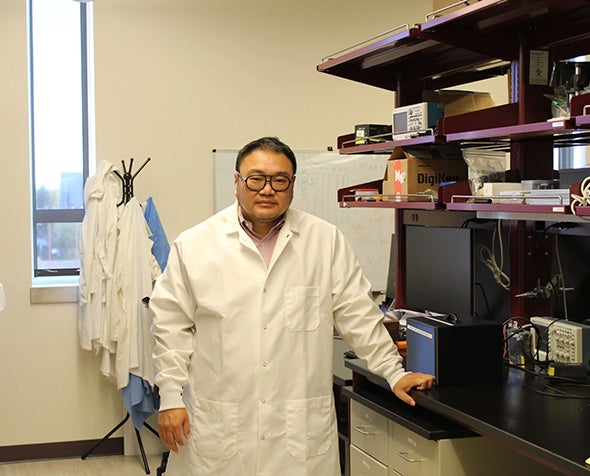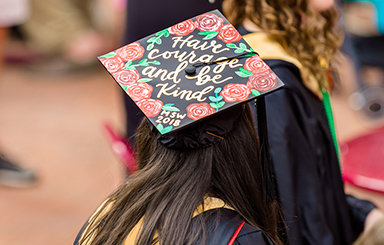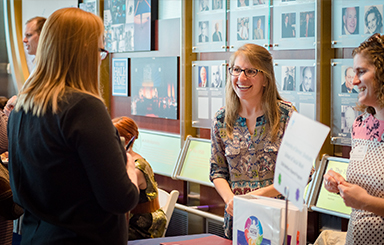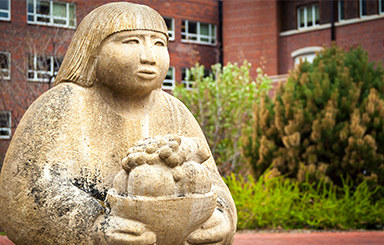Student Engineers Turn Big Ideas into Prototypes for Industry Clients
At this annual event, DU engineering students showcase yearlong projects designed to solve real-world problems for industry clients.
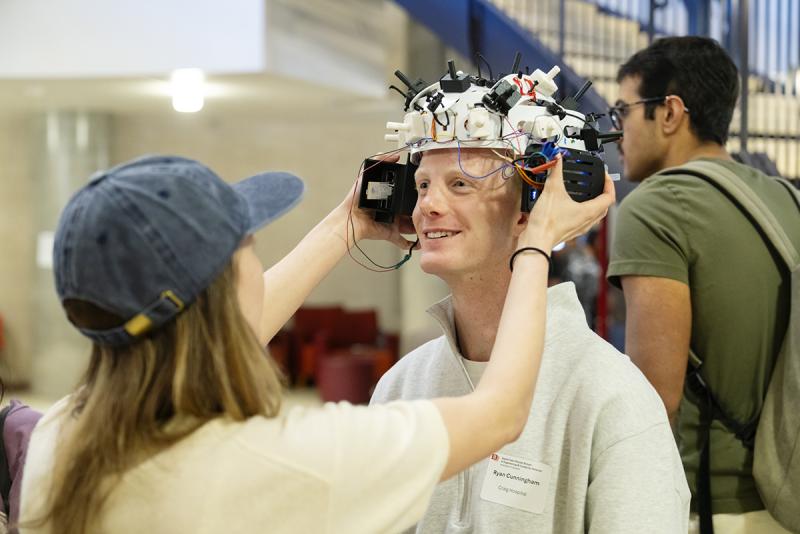
At the University of Denver’s Ritchie School of Engineering and Computer Science, graduating students walk away not only with a diploma but also with experience tackling real-world problems with high-impact solutions.
Throughout their final year, students in the Senior Design course take on the role of engineering consultants as part of Mountain Top Engineering, the program’s student-run consulting firm. That transformation was on full display at the Senior Design Symposium on May 16, where students presented months of work developed in collaboration with faculty and industry sponsors.
This isn’t your typical science fair. The projects offer clients fresh, innovative approaches to long-standing challenges. For students, they’re a launchpad—giving them technical experience, project ownership, professional connections, and an understanding of how engineering shapes lives.
This year’s projects addressed a wide range of real-world needs—mobility aids for patients and caregivers, surgical tools that improve outcomes, educational devices for inclusive learning, and smart industrial solutions.
Ellen Corr, a mechanical engineering and math major, spent months creating a foldable transfer board for wheelchair users that makes it easier to transfer to a car or bed. “It seemed like something that had a really direct positive effect on people,” she says. “I was honestly surprised that it was something that hadn't been made already—so it seemed like an interesting problem to tackle.”
One team worked with Agile Orthopedics to develop lightweight, portable parallel bars that fold to fit in a car trunk, enabling prosthetics patients to practice walking at home while their clinicians monitor progress remotely.
“The idea is they fit into the back of a sedan so a practitioner can bring this rehabilitation device to the patient’s home and the patient doesn't have to come to a hospital or any other center to learn how to walk again,” says mechanical engineering student Will Melsha. “I’m really proud of how I worked with this team and how we were able to just make something from scratch—something that is actually viable in the real world.”
Another team designed an attachment for smart torque wrenches that expands the tool’s offline storage and logging capabilities—improving control, validation, and overall efficiency. Other designs included the creation of a tactile physics education tool for visually impaired students and a wearable electroencephalogram (EEG) headband designed for easy at-home use.
Students worked directly with Agile Orthopedics, Craig Hospital, B. Braun Medical, Lockheed Martin Space, the Blind Institute of Technology, and more. That access to real clients and use-case constraints pushed teams beyond textbook knowledge and into authentic engineering practice.
“It was really valuable learning how to work as a team and see exactly how a project like this would go in the workplace,” Melsha says. “It brings immense value, and it’s good to put on the résumé.”
Projects are structured to mimic professional consulting work. Over three academic quarters, students move through design planning, documentation, prototyping, and iteration. They also take the lead on client communication, budgeting, manufacturing, and testing.
Along the way, students build connections with mentors who help guide their technical work and help them navigate the industry.
By the time they present at the Senior Design Symposium, students have spent months applying classroom knowledge to problems with real-world consequences. The symposium goes beyond a traditional presentation—it's a celebration of impact and a proof of concept.
Mechanical engineering student Alana Ginter, who worked on the wearable EEG device, says the hands-on experience provided insight into her future career and helped clarify what type of post-graduate job would best fit her interests.
“This is an extremely beneficial process,” Ginter says. The hands-on experience helped her gain a better “understanding of the engineering work environment and the engineering process as a whole.”
For these students, the symposium marks not just the end of their college careers but also the beginning of their impact beyond the classroom—armed with the skills, experience, and confidence to thrive as professional engineers.
